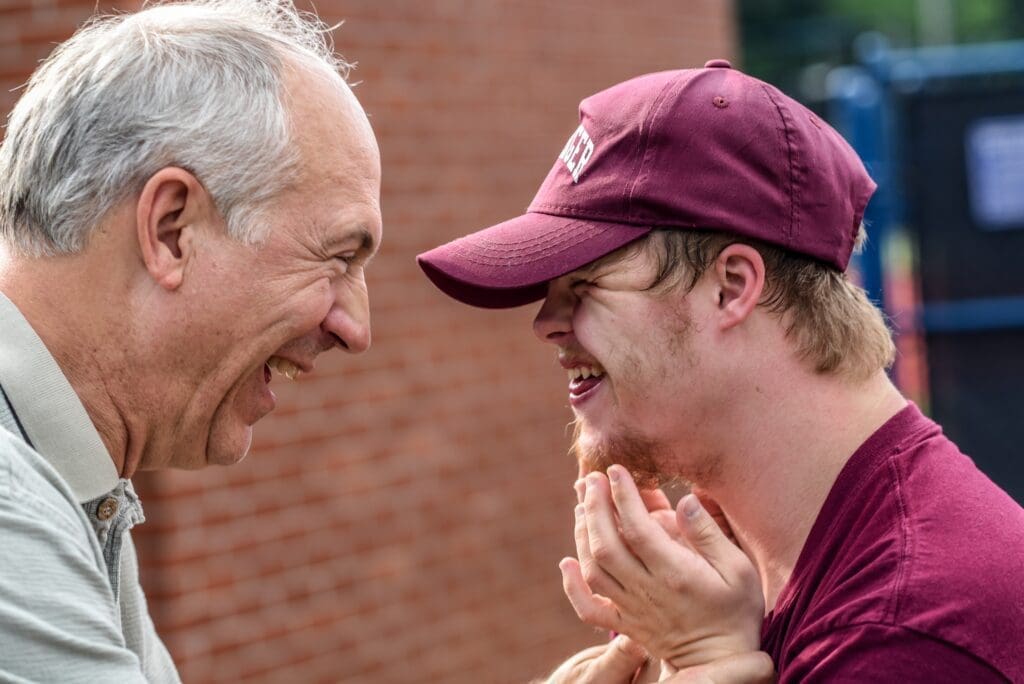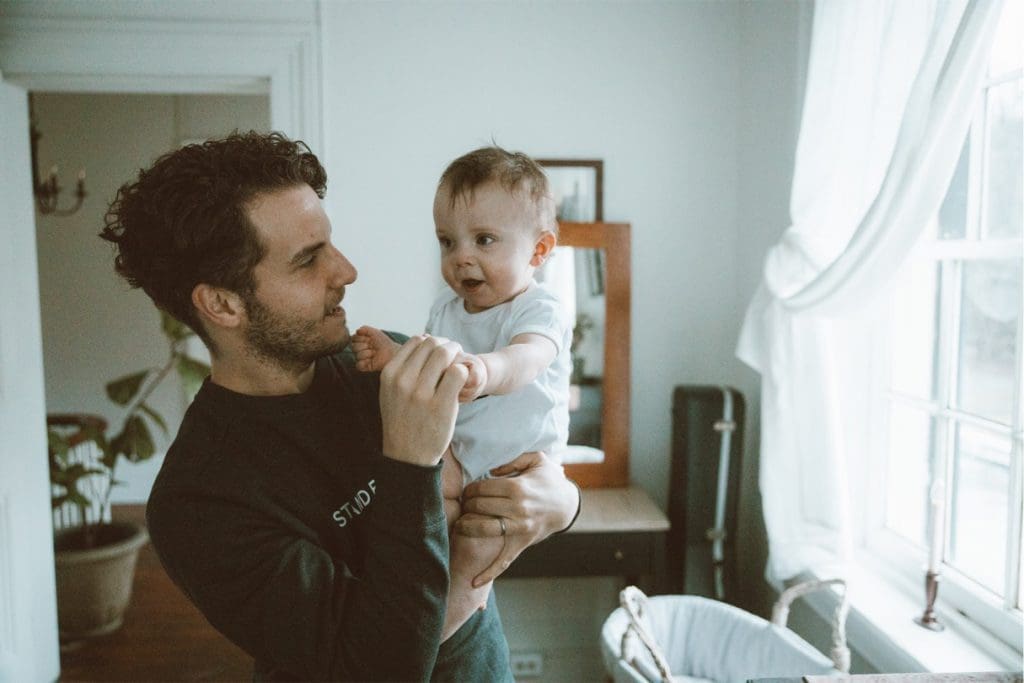
What is Pro-Life? We’re Asking the Wrong Question.
“The quality of your life is a direct reflection of the quality of questions you ask yourself,” so goes the leadership maxim. And it’s self-evidently true; after all, it doesn’t take much to imagine the difference between “Why did this bad thing happen to me?” and “How could I learn, and what could God be showing me in response to this bad thing?” Quality questions have the power to reframe.
Along the same lines, what if a better question could reframe the discussion over what it means to be pro-life? What if the quality of the pro-life community could be enhanced by the quality of questions we’re asking ourselves?
So often, we spend time asking what—What does it mean to be pro-life? What counts as pro-life? What must be affirmed and cannot be denied in order to qualify as being pro-life? But instead of asking what, we should be asking why—Why do we stand for life?
There are lots of compelling reasons to stand for life, but the ultimate, foundational answer to that question biblically is because every single human being is created in the image of God (Gen 1:26–27). Scripture presents the created order as incomplete until God creates humanity in the image of God, and once he does man and woman are upheld as God’s ambassadors on the earth, representing the divine presence of God himself on the earth. All that to say, the Bible’s motivation for the protection of human life is grounded in the reality that humanity is made in God’s image (Gen 9:6). That’s why we stand for life, according to God. That being the case, focusing on both this question why and the biblical answer to it has the power to do at least three significant things.
Asking why shows it’s possible to hold biblical concerns for unbiblical reasons
So often, we debate what it means to be pro-life. And here, groups tend to divide into two basic tribes: (1) a narrowly-focused group that keeps its attention on opposing abortion and saving preborn children, sometimes also including end-of-life concerns like euthanasia; and (2) a wider-focused group that expands its attention to opposing additional issues of injustice related to human dignity on top of abortion—often including vulnerable migrants, poverty, sex trafficking and abuse, and racial injustice.
But what is striking to me about this conversation is how our priorities can be shaped less by faith in God and more by fear of man. I’ve seen lots of instances where people in the “anti-abortion” camp weren’t opposed in principle to care for, say, refugees, but they were opposed to mentioning it themselves because it would get them in trouble with their tribe. I’ve seen other instances where people in the “anti-injustice” camp personally believe preborn children are worthy of protection, but making that a focus would make them toxic among their peers. The point here is there is no one more eager to make us captive to a constituency than Satan himself. After all, sin fundamentally disrupts, distorts, and disintegrates things that God has made whole—and Satan’s strategy is to tear apart those things that God means to be together. Focusing on the image of God doesn’t answer every question, but it does tend to highlight the common rationale for why God cares for the protection of life at every age and stage. What God hath joined together, let no man (or tribe or form of activism) tear asunder.
Asking why makes it clear our posture is just as important as our position
The picture of humanity at creation was one of beings made both whole and holy. Sin, however, spoiled both of those things, and since then the story of Scripture is one which sees the Triune God working to renew that which was broken. That’s why Scripture refuses to focus its attention exclusively on the external, on the right beliefs or actions—instead it consistently drives one to the heart, calling for us to offer all of ourselves as living sacrifices, for total transformation of our beings, and to refuse the way of the world (Rom 12:2). That means God is interested not just in what we do, but why we do it—in our attitudinal posture, not just our advocated positions.
This is seen all the more clearly when one hears so-called pro-life messages declared in ways that are decidedly discordant with a vision of humanity created in the image of God. It’s one thing, for example, to say that abortion is the preeminent evil of this generation, and our advocacy efforts should prioritize it. It’s quite another thing to dismiss the concerns of those seeking to protect terrorized refugees or vulnerable migrants by dehumanizing them with language like “anchors” or with arguments like “they’re stealing our jobs.” Alternatively, it’s one thing to say that those who follow after Christ ought to be at the forefront of standing for life not just in the womb but at every age and stage of life. It’s quite another to demonize those who prioritize combating abortion as being “pro-life and anti-women” or to claim to be deepening a focus on life issues when in reality one would be pleased to divert focus away from abortion politics altogether. A thoroughgoing focus on the image of God will allow us to see that a pro-life position disconnected from the vine of a pro-life posture cannot long survive and will not ultimately persuade. Conversely, an intentional commitment to seeing all of humanity in the image of God—from womb to tomb—may not only inform our policies but transform us into the kind of persons God wants us to be.
Asking why reveals we’re closer than we may think
Perhaps the most compelling reason to focus on the why of humanity created in the image of God is because it has the explanatory power to reveal that, often, we’re talking past one another, and additionally, we’re much closer to one another than we realize.
First, the reality of humanity created in the image of God establishes parameters for the pro-life conversation. In other words, if you believe all humanity is created in the image of God, at least three things must also follow: (1) you categorically must oppose the violent slaughter of life in the womb, because these innocent ones are created in the image of God—in other words, you cannot be pro-life and pro-abortion; (2) you simultaneously must recognize that a commitment to human dignity requires more than opposing abortion, because life created in the image of God extends well past the womb—in other words, you cannot be pro-life and anti-immigrant, or pro-life and indifferent to sex trafficking or any number of other dignity-denying injustices; (3) you cannot stretch the meaning of “pro-life” or the implications of “human dignity” too far without both becoming meaningless—in other words, if every issue is a “pro-life” or “human dignity” issue, then no issue is a “pro-life” or “human dignity” issue. The great thing is, almost every person I’ve ever met recognizes all three of these things; it’s just that our twenty-first century tribal allegiances tend to push us into different corners. A focus on the image of God can help us transcend party politics for the preservation of life.
Second, the reality of humanity created in the image of God means also that every one of us is coming to these debates from a different perspective with different lived experiences. It should be no surprise that some of our imaginations have been captured by the horror of injustice against those in the womb. Often, this is prompted by a crisis in one’s past, or by seeing a baby’s life saved or a mom’s life transformed. At the same time, it should be no surprise that some of our hearts have been gripped by seeing the wickedness of racial bigotry or the horror of sexual abuse. Often, this too is amplified when one sees or experiences such a reality firsthand. Understanding the beauty of God’s creation of humanity can take into account the way that we need people wired to emphasize each and every injustice across the world if we’re to stand against sin far as the curse is found. Instead of seeing one another as competitors then, a vision of human dignity can allow us to see one another as complements to one another in service to the same fundamental goal—honoring God by preserving life.
Admittedly, this doesn’t answer every question. In a fallen world with competing evils there are always going to be prudential differences in terms of which wickedness deserves our most intense focus and when. But I cannot help but think a pro-life and pro-justice movement simultaneously committed to a vision of humanity created in the image of God has more in common than it realizes and could accomplish more with a focus not on the what but on the why—all the while we look forward to when, the day our Lord returns to judge all wickedness and make everything sad come untrue.
Join us as we walk through our Image of God study. Access the study for free at standforlife.app!





